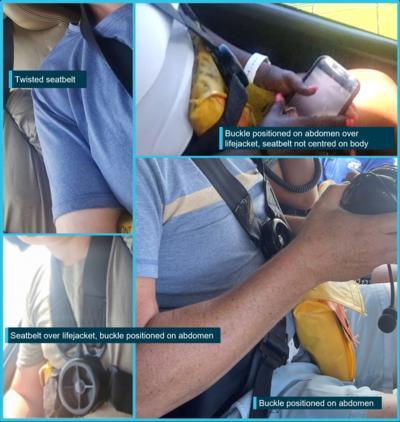Tue, Jan 09, 2024
'See & Avoid’ Failure Belies Other Structural Misses in Tour Industry
An Australian helicopter tour crash has been updated with more recent findings, just over a year since the incident took place.

On January 2nd, 2023, a pair of Eurocopter EC120B4 aircraft collided on the Gold Coast of Queensland, killing 4 and injuring 9 passengers. The incident was fairly well documented, thanks to the tourists aboard. While headlines focused on the interim report’s mention of cocaine traces in one of the pilots’ blood, a few other lessons of note arise. The pilot’s positive result was accompanied by no signs of chronic stimulant use, and the drug could have been taken up to 4 days before the accident flight. Given the timeline included in the report, the recent New Year’s holiday makes for a likely ingestion date. It’s “unlikely” that the cocaine would have caused pilot impairment, in any case. So what’s more interesting?
Firstly, the incident appears to be caused by a simple human factors error - poor communications, and pilots relying on assumptions of externalities instead of verifying things for themselves brought the aircraft down that day. Second, the proper and continued use of life jackets for both pax and crew left something to be desired. Footage from passengers showed that a handful of those involved were not wearing their seat belts properly. Only one of the pilots had apparently donned one of their constant-wear lifejackets. The Australian NTSB report makes note that one of the Crewsaver jackets was overdue for an inspection, while the model itself was technically not CASA approved for use.
While investigating, chief commissioner Angus Mitchell brought up a concern of those involved in researching the incident: Those in the air tourism industry, both operators and passengers, may not fully understand how constant-wear life jackets should be worn in conjunction with seat restraints. Some passengers had improperly buckled their own 4-point restraints, and ATSB investigators believe that improved preflight briefings with more clearly defined belt criteria would have helped prevent injury. Worse, Sea World Helicopters’ preflight safety video even illustrates “proper” belt fitment incorrectly, with pax on screen sporting their lap belts across their abdomen. In that case, it could cause additional abdominal injury when the soft, unprotected organs of the abdomen are forced to take the brunt of decelerational forces.
A final report is expected sometime later this year, says Mitchell. “This was a tragic accident, and it is our responsibility to make findings and drive safety actions, which reduce the likelihood of a similar occurrence in the future,.”
More News
"The owners envisioned something modern and distinctive, yet deeply meaningful. We collaborated closely to refine the flag design so it complemented the aircraft’s contours w>[...]
Nonradar Arrival An aircraft arriving at an airport without radar service or at an airport served by a radar facility and radar contact has not been established or has been termina>[...]
From 2022 (YouTube Edition): Still Life with Verve David Uhl was born into a family of engineers and artists—a backdrop conducive to his gleaning a keen appreciation for the >[...]
Also: Electra Goes Military, Miami Air Taxi, Hypersonics Lab, MagniX HeliStrom Amazon’s Prime Air drones are back in the spotlight after one of its newest MK30 delivery drone>[...]
Also: Trailblazing Aviator Betty Stewart, Wind Farm Scrutiny, Chatham Ban Overturned, Airbus Shares Dive A Thunderbird pilot, ID'ed alternately as Thunderbird 5 or Thunderbird 6, (>[...]
 Aero-News: Quote of the Day (12.11.25)
Aero-News: Quote of the Day (12.11.25) ANN's Daily Aero-Term (12.11.25): Nonradar Arrival
ANN's Daily Aero-Term (12.11.25): Nonradar Arrival Classic Aero-TV: David Uhl and the Lofty Art of Aircraft Portraiture
Classic Aero-TV: David Uhl and the Lofty Art of Aircraft Portraiture Airborne-NextGen 12.09.25: Amazon Crash, China Rocket Accident, UAV Black Hawk
Airborne-NextGen 12.09.25: Amazon Crash, China Rocket Accident, UAV Black Hawk Airborne 12.05.25: Thunderbird Ejects, Lost Air india 737, Dynon Update
Airborne 12.05.25: Thunderbird Ejects, Lost Air india 737, Dynon Update



